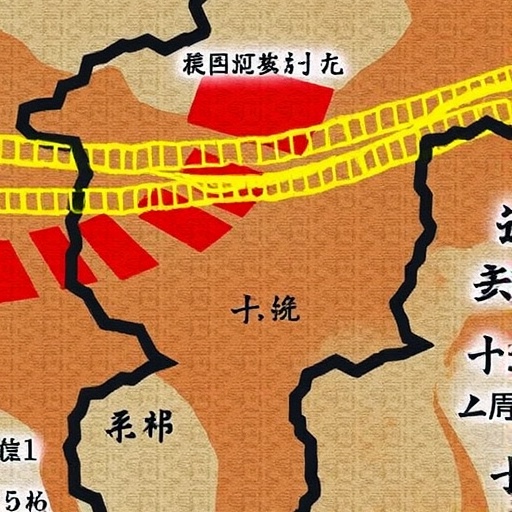A remarkable discovery emerging from the realm of ancient genomics is fundamentally challenging long-standing assumptions about social structures in early human societies. Newly analyzed ancient DNA from the Neolithic Fujia site in China reveals compelling evidence of a matrilineal organization maintained by two distinct maternal clans. This groundbreaking research sheds light on a community whose societal fabric was intricately woven around female lineage, offering unprecedented insights into the variability and complexity of kinship systems during humanity’s formative agricultural epochs.
Historically, the discourse on human social organization has often grappled with the directionality of descent systems, with 19th- and early 20th-century scholars hypothesizing an original matrilineal stage before the widespread advent of patrilineality. Pioneers like Johann Jakob Bachofen and Lewis Henry Morgan proposed an evolutionary model in which early societies transitioned from matrilineal to patrilineal as private property and social hierarchies intensified. However, this hypothesis has remained contentious, mainly due to an absence of direct archaeological corroboration and scant genetic evidence from ancient populations, leaving the notion largely speculative.
Against this backdrop, the Fujia site’s genetic signatures stand out with striking clarity. Analysis of mitochondrial DNA—maternal genetic markers inherited exclusively through mothers—reveals that individuals buried within distinct cemeteries belonged predominantly to one of two major mitochondrial haplogroups. Notably, many shared identical mitochondrial sequences, signaling close maternal kinship ties that likely mirrored social organization around sustained matrilineal clans. This genetic partitioning aligns strongly with the spatial boundaries of burial grounds, suggesting the cemeteries were social demarcations reflecting clan affiliations.
The persistence of this dual-clan structure across an estimated 250 years indicates long-term stability in community organization. Such a pattern resonates with ethnographic parallels found among modern matrilineal peoples, such as the Mosuo, Lahu, and Tlingit, wherein individuals maintain lifelong membership in their maternal clan and are customarily interred within their natal territories. Yet, while the genetic data compellingly highlights maternal descent as foundational, it cannot independently resolve nuances such as post-marital residence patterns, which in extant matrilineal societies may vary considerably—from duolocal to matrilocal or avunculocal residence.
Intriguingly, runs of homozygosity (ROH) analysis at Fujia illuminated a high degree of endogamy—marriage within the community—without evidence pointing to prevalent close-kin (consanguineous) unions. This behavioural pattern diverges from the female exogamy commonly observed in contemporaneous Neolithic European populations, where patrilineal systems predominated. The comparatively minimal ROH signals in other Neolithic East Asian groups underscore Fujia’s unique social dynamics. Hypothetically, males at Fujia may have sought spouses within proximate communities to consolidate local power and maintain clan continuity, a pattern reminiscent of practices documented within several Southeast Asian matrilineal and matrilocal societies characterized by limited female mobility and reduced genetic diversity.
Despite these persuasive genetic insights, caution is warranted before definitively labeling the Fujia social structure as strictly matrilineal. Analogous cases such as the Samaritans—a patrilineal community exhibiting low mitochondrial diversity—demonstrate that low maternal genetic variability alone is insufficient proof of matrilineal descent. Furthermore, certain matrilineal groups paradoxically display substantial mitochondrial haplogroup diversity, indicating that maternal lineage transmission can manifest amidst broad genetic variation. An alternative explanation might involve a strong maternal founder effect or demographic bottlenecks that constricted genetic diversity, coupled with socially enforced female immobility and male mobility between groups. Even absent formalized matrilineal inheritance, such dynamics could produce the observed mitochondrial homogeneity.
Nonetheless, the spatially structured burial patterns and extensive kinship connections documented at Fujia advocate for an interpretation favoring persistent matrilineal social organization. The site’s archaeological context situates it firmly within the broader Dawenkou cultural horizon—specifically the Wucun type—characterized by millet farming, reliance on marine resources, and modestly sized settlements with limited stratification signs. This regional coherence underscores that the Fujia matrilineal pattern reflects a wider social phenomenon rather than an isolated anomaly.
Fujia’s temporal frame coincides with mounting social complexity during Late Neolithic China. Unlike more stratified contemporaneous Dawenkou centers such as Jiaojia and Gangshang, Fujia reveals lower wealth accumulation, subdued social hierarchies, and smaller population sizes. These distinctions offer critical insight into the variability of Neolithic social models, contrasting pronounced elite networks and wealth disparities with community structures reliant on shared maternal heritage and relatively egalitarian resource distribution.
The convergence of ancient DNA, stable isotope testing, and archaeological evidence at Fujia compellingly demonstrates that matrilineal social frameworks could emerge and endure in Neolithic East Asia absent the powerful the accumulation of wealth and property. Through a lens reflecting two enduring maternal clans, this research reconstructs how kinship, descent, and community identity were negotiated in a formative era of human settlement and subsistence transition.
Looking forward, the Fujia findings open exciting avenues for re-examining kinship systems and social stratification in prehistoric populations worldwide. As sequencing technologies evolve and datasets expand, integrating genetic signatures with nuanced archaeological and ethnographic perspectives will further unravel the social tapestries concealed within ancient remains. This study not only enriches understanding of Neolithic China but also reframes enduring debates on the nature and origins of human social organization.
In sum, the discovery of a two-clanned matrilineal community at Fujia highlights the complexity and diversity of human social evolution. It urges reconsideration of accepted models and invites a broader appreciation for matrilineal principles as viable, adaptive strategies in ancient societies. By illuminating how maternal ties shaped identity, inheritance, and community cohesion, this work provokes fresh questions about the interplay of biology, culture, and history in shaping the human condition.
Subject of Research: Ancient population genetics and social organization in Neolithic China
Article Title: Ancient DNA reveals a two-clanned matrilineal community in Neolithic China
Article References:
Wang, J., Yan, S., Li, Z. et al. Ancient DNA reveals a two-clanned matrilineal community in Neolithic China. Nature (2025). https://doi.org/10.1038/s41586-025-09103-x
Image Credits: AI Generated




